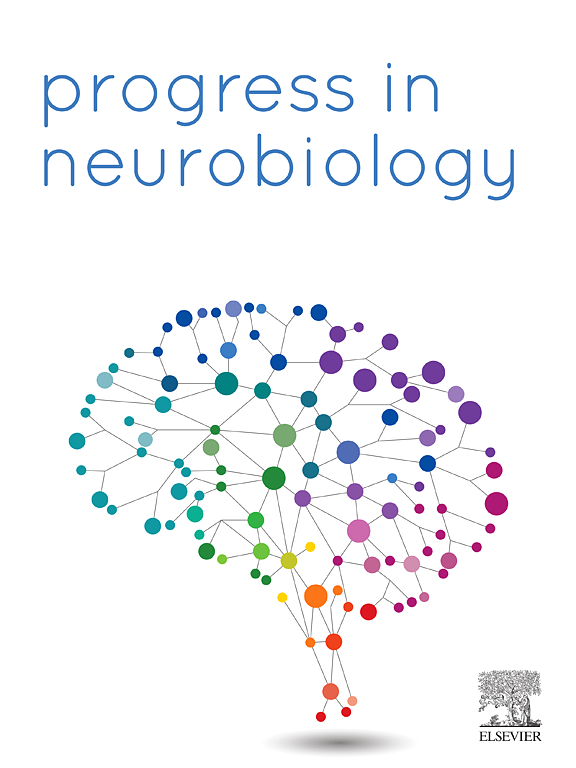Glutamine transport via amino acid transporter NTT4 (SLC6A17) maintains presynaptic glutamate supply at excitatory synapses in the CNS
IF 6.1
2区 医学
Q1 NEUROSCIENCES
引用次数: 0
Abstract
The glutamate-glutamine cycle is thought to be the principle metabolic pathway that recycles glutamate at synapses. In this cycle, synaptically released glutamate is sequestered by astrocytes and forms glutamine, before being returned to the presynaptic terminal for conversion back into glutamate to replenish the neurotransmitter pool. While many aspects of this cycle are established, a key component remains unknown: the nature of the transporter responsible for the presynaptic uptake of glutamine. We hypothesise that neurotransmitter transporter 4 (NTT4/SLC6A17) plays this role. Accordingly, we generated NTT4 knockout mice to assess its contribution to presynaptic glutamine transport and synaptic glutamate supply. Using biochemical tracing of 13C metabolites in awake mice, we observe a reduction of neuronal glutamate supply when NTT4 is absent. In addition, direct electrical recording of hippocampal mossy fibre boutons reveals a presynaptic glutamine transport current that is eliminated when NTT4 is removed or inhibited. The role of NTT4 in neurotransmission was demonstrated by electrophysiological recordings in hippocampal slices, which reveal that NTT4 is required to maintain vesicular glutamate content and to sustain adequate levels of glutamate supply during periods of high-frequency neuronal activity. Finally, behavioural studies in mice demonstrate a deficit in trace fear conditioning, and alterations in anxiety behaviour and social preference. These results demonstrate that NTT4 is a presynaptic glutamine transporter, which is a central component of the glutamate-glutamine cycle. NTT4 and hence the glutamate-glutamine cycle maintain neuronal glutamate supply for excitatory neurotransmission during high-frequency synaptic activity, and are important regulators of memory retention and normal behaviour.
通过氨基酸转运体NTT4 (SLC6A17)运输谷氨酰胺维持中枢神经系统兴奋性突触的突触前谷氨酸供应。
谷氨酸-谷氨酰胺循环被认为是突触中谷氨酸循环的主要代谢途径。在这个循环中,突触释放的谷氨酸被星形胶质细胞隔离并形成谷氨酰胺,然后返回突触前末端转化为谷氨酸,以补充神经递质池。虽然这个循环的许多方面已经确定,但一个关键的组成部分仍然未知:负责突触前谷氨酰胺摄取的转运体的性质。我们假设神经递质转运蛋白4 (NTT4/SLC6A17)发挥了这一作用。因此,我们产生了NTT4敲除小鼠,以评估其对突触前谷氨酰胺运输和突触谷氨酸供应的贡献。通过对清醒小鼠13C代谢物的生化示踪,我们观察到NTT4缺失时神经元谷氨酸供应减少。此外,海马苔藓纤维钮扣的直接电记录显示,当NTT4被移除或抑制时,突触前谷氨酰胺运输电流被消除。海马电生理记录证实了NTT4在神经传递中的作用,这表明NTT4是维持水泡谷氨酸含量和在高频神经元活动期间维持足够水平的谷氨酸供应所必需的。最后,对老鼠的行为研究表明,老鼠在恐惧条件反射方面存在缺陷,焦虑行为和社会偏好也会发生改变。这些结果表明,NTT4是突触前谷氨酰胺转运蛋白,是谷氨酸-谷氨酰胺循环的核心组成部分。NTT4和谷氨酸-谷氨酰胺循环在高频突触活动中维持神经兴奋性神经传递的谷氨酸供应,并且是记忆保留和正常行为的重要调节因子。
本文章由计算机程序翻译,如有差异,请以英文原文为准。
求助全文
约1分钟内获得全文
求助全文
来源期刊

Progress in Neurobiology
医学-神经科学
CiteScore
12.80
自引率
1.50%
发文量
107
审稿时长
33 days
期刊介绍:
Progress in Neurobiology is an international journal that publishes groundbreaking original research, comprehensive review articles and opinion pieces written by leading researchers. The journal welcomes contributions from the broad field of neuroscience that apply neurophysiological, biochemical, pharmacological, molecular biological, anatomical, computational and behavioral analyses to problems of molecular, cellular, developmental, systems, and clinical neuroscience.
 求助内容:
求助内容: 应助结果提醒方式:
应助结果提醒方式:


